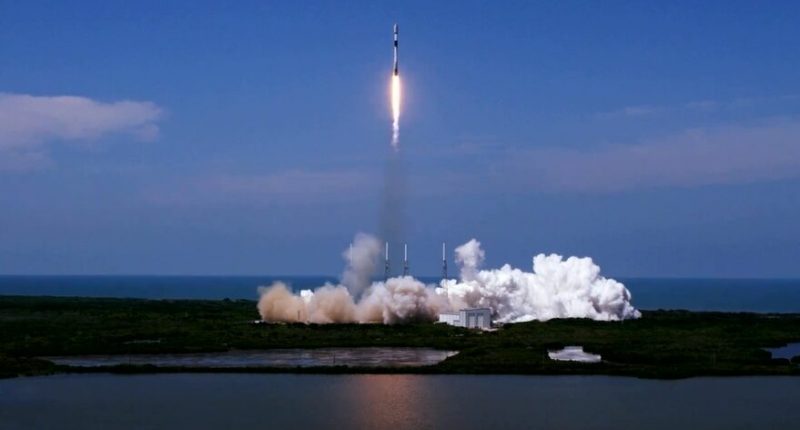Elon Musk and SpaceX have been betting heavy on the Starlink constellation, pouring billions and billions into the project that will aim to provide low latency high speed internet to users around the globe. However, for the past few months, the company has been engaged in other activities, pushing Starlink to the backseat. Today, the space company has launched a 229-foot-tall Falcon 9 rocket for a historic tenth flight on Monday, ending a hiatus that has been going on for about 3 months now.
Dubbed B1049, the Falcon 9 took to the skies from the Space Launch Complex 4E at Vandenberg Space Force Station, carrying yet another batch of 51 Starlink satellites into space. The 22nd launch of SpaceX this year is also the first since this May.
“What a beautiful view of Falcon 9 as it successfully lifts off from pad 4E at Vandenberg Space Force Base, carrying our stack of 51 Starlink satellites to orbit,” SpaceX propulsion engineer Youmei Zhou said during the launch broadcast.
Nearly nine minutes after liftoff, the rocket’s first-stage booster returned to the planet and touched down on SpaceX’s drone ship “Of Course I Still Love You,” marking the company’s 90th successful landing to date. This also marked the first launch by SpaceX this year from the Vanderberg Space Force Base and the 16th Starlink launch in 2021.
According to Zhou, the launch represented a “huge leap forward” as the Starlink satellites would be testing fully operational space lasers (instead of radio frequencies) to communicate with each other. “Fewer pings to ground stations means Starlink will be able to both expand and improve service especially in very remote areas,” she said. “All future Starlink satellites will feature optical space lasers.”
SpaceX has been actively launching satellites into orbit in order to provide the Starlink service to individuals and companies across the globe, transcending geographical borders and delivering high-speed, low-latency internet services to areas with little-to-no internet activity.
This initiative has gained traction as SpaceX recently completed shipping of 100,000 Starlink terminals to its customers across the globe. The Starlink service will be operating in at least 14 countries, with an aim to enter more geographies as time goes on. The company has already launched more than 1790 Starlink satellites into orbit – yet another record – and exceeded its initial goal of 1,440 satellites. SpaceX does not plan to stop here and has already gained approval for launching more satellites.
The Tech Portal is published by Blue Box Media Private Limited. Our investors have no influence over our reporting. Read our full Ownership and Funding Disclosure →






